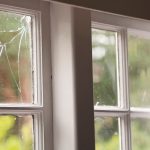Before you call in a roofer to inspect your roof, it’s a good idea to do some homework yourself to try to determine how much work might be necessary. You’ll want to try to figure out whether you are dealing with an old or an active roof leak – or if you are dealing with a roof leak at all. There may be other reasons why you are seeing moisture on the ceiling.
Old or Active Roof Leak?
If you notice water dripping into your home when it rains, then you have an active roof leak. That’s an easy call to make, and you need to contact a roofing contractor to get the leak repaired.
If you have recently discovered a stain on the ceiling that may have been present for some time, the situation is different. It could be from a leak that was previously repaired. One way to determine whether the stain is “fresh” is to draw an outline of it using a pencil and then check it after the next rainfall to see whether it has grown.
Moisture Damage Grows Independent of Damp Weather
When damp spots and stains grow or you see moisture damage in your home when there hasn’t been any recent rainfall, the leak may be from another source other than your roof. The culprit may be condensation that has built up in your home, such as:
- A bathroom that doesn’t have an exhaust fan or the fan is not vented to the exterior of your home
- Leaky dryer vent
- Damp basement
- Improper roof ventilation
- Uneven insulation which creates cold spots where moisture condenses and drips onto the ceiling
Roof Systems May be the Problem
If you have ruled out any interior sources of moisture as being the problem, the roof itself may not be leaking. The roof systems may be leaking near your chimney, where they are penetrated by plumbing vents or at the point where the roof slope changes direction.
A tight collar should be in place at the point where the plumbing vent pipes penetrate the roof surface. It will be attached to a flange. Rubber collars can crack and leak and older lead collars can loosen over time, allowing water to penetrate into your home.
Step flashing should be installed where the chimney interrupts the roof line. A counter flashing is put in place over top of the step flashing to direct water running down the sides of the chimney over step flashing.
Roof to wall joints should also have step and counter flashing. Water may be entering the wall above where it meets the roof, which can look like the roof itself is leaking.
If you are concerned about an exterior leak to your home, contact George Kent Home Improvements to get a personalized quote. We are certified roofing contractors and can diagnose and repair your problem properly.





